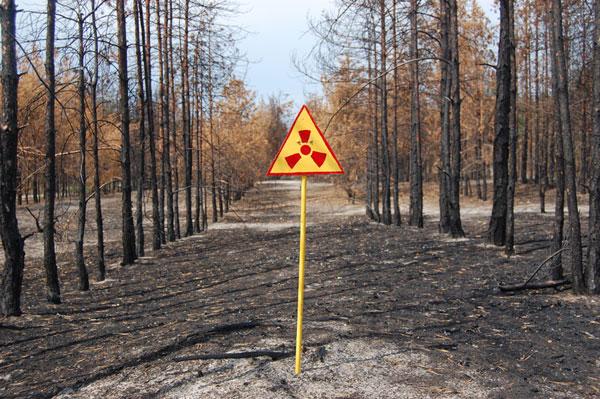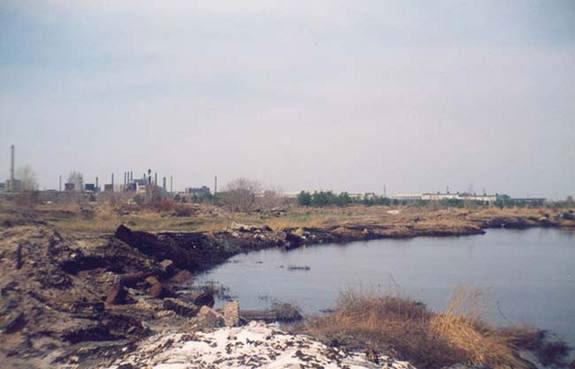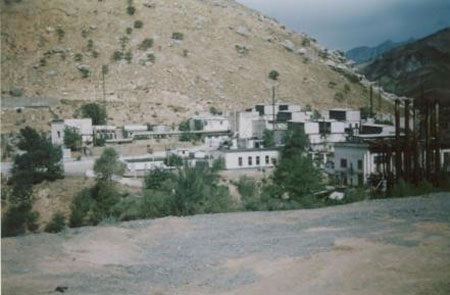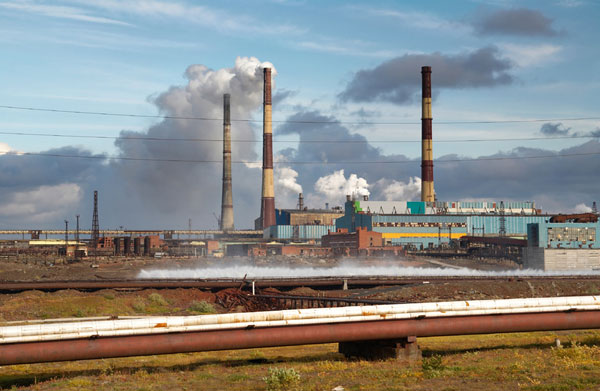
10 of the Most Polluted Places on Earth
The most polluted areas of the world are typically little known even in their own countries, yet they impact millions of people, leading to cancers, birth defects, mental retardation and reduced life expectancies all over the globe.
Here are 10 of the most polluted places in the world, in alphabetical order:

Chernobyl, Ukraine
Chernobyl is the infamous site of the worst nuclear disaster in history. On April 26, 1986, a fiery meltdown of the nearby nuclear reactor's core released 100 times more radiation than the atom bombs dropped over Hiroshima and Nagasaki.
Now, more than two decades later, the 19-mile (30.6-kilometer) exclusion zone around the plant remains uninhabitable and local residents still show the scars of the disaster. Skin lesions, respiratory ailments, infertility and birth defects were the norm for years following the accident in the contaminated areas in Belarus, Russia and Ukraine, and from 1993 to 2002, more than 4,000 cases of thyroid cancer were diagnosed among children and adolescents from this region.

Dzerzhinsk, Russia
Until the end of the Cold War, Dzerzhinsk was one of Russia's principal manufacturing sites of chemical weapons. Nearly 300,000 tons of chemical waste were improperly disposed of there between 1930 and 1998, leading the Guinness Book of World Records to name it the most chemically polluted city in the world.
In 2003, the death rate in the area was reported to exceed the birth rate by 260 percent, and the average life expectancy was reported to be 42 years for men and 47 for women. A quarter of the city's 300,000 residents are still employed in factories that produce toxic chemicals.
Kabwe, Zambia
A legacy of decades of lead and zinc mining have left a city poisoned by debilitating concentrations of lead dust in the soil and by metals in the water. Child blood levels of lead are on average five to 10 times the allowable EPA maximum.
La Oroya, Peru
At the mining town of La Oroya, toxic emissions from the metal processing plant owned by the Missouri-based Doe Run Corporation have been largely responsible for dangerously high levels of lead in the blood of 99 percent of the children living in and around the area. Extremely high rates of premature deaths are linked to noxious gasses from the smelter, and lung-related ailments are commonplace. Vegetation in the surrounding area has been destroyed by acid rain due to high sulfur dioxide emissions.
Linfen, China
At Linfen, residents have said they literally choke on coal dust in the evenings. This city lies in Shanxi province in China, the heart of the country's enormous and expanding coal industry, which provides roughly two-thirds of the nation's energy. China has noted that Linfen has the worst air quality in the country, but it exemplifies many cities in the nation the World Bank has stated that 16 out of 20 of the world's worst polluted cities are in China. The city does plan to replace small, highly polluting plants with larger, cleaner, more regulated facilities, and toxic emissions will be cut further by shifting from coal to gas for central heating.

Mailuu-Suu, Kyrgyzstan
Mailuu-Suu is home to nearly 2 million cubic meters of radioactive mining waste that threatens the entire Ferghana valley, one of the most fertile and densely populated areas in Central Asia This area also experiences high rates of seismic activity a landslide could disturb one of the dumps and expose radioactive material or force it into nearby rivers. This fear was nearly realized in 2002 when a huge mudslide blocked the course of the Mailuu-Suu River and threatened to submerge one waste site. In 2006, about 300,000 cubic meters of material fell into the Mailuu-Suu River near the uranium mine tailings, the result of yet another landslide.

Norilsk, Russia
An industrial city founded in 1935 as a slave labor camp, the Siberian city of Norilsk houses the world's largest heavy metals smelting complex. The city has been accused of being one of the most polluted places in Russia, where the snow is black, the air tastes of sulfur and the life expectancy for factory workers is 10 years below the Russian average. Children suffer from numerous respiratory diseases, which account for 15.8 percent of all deaths among children. Premature births and late-term pregnancy complications are also frequent.
Sukinda, India
Sukinda contains more than 97 percent of India's chromite ore deposits. Twelve mines operate without environmental controls, leaching hexavalent chromium into drinking water supplies. More than 30 million tons of waste rock are spread over the surrounding areas, and untreated water is discharged by the mines into the river. Chromite mine workers are constantly exposed to contaminated dust and water, and gastrointestinal bleeding, tuberculosis and asthma are common ailments. Local research suggests nearly 25 percent of the inhabitants roughly a half-mile (1 km) from the sites are suffering from pollution-induced diseases.
Sumgayit, Azerbaijan
Sumgayit was a major Soviet industrial center housing more than 40 factories producing industrial and agricultural chemicals, which released 70,000 to 120,000 tons of harmful emissions annually. Untreated sewage and mercury-contaminated sludge continue to be dumped haphazardly. A high percentage of babies are born premature, stillborn, and with genetic defects such as Down's syndrome, anencephaly, spina bifida, hydrocephalus, bone disease, and mutations such as club feet, cleft palate, and additional digits.
Tianying, China
Tianying is one of the largest lead production bases in China, with an output accounting for half of the country's total production, and low-level technologies, illegal operation and the lack of any serious pollution control measures in the firms have led to average lead concentrations in air and soils respectively 8.5 times and 10 times national health standards. Local crops and wheat at farmers' homes were also contaminated by lead dust, with some levels 24 times higher than national standards. Residents, particularly children, are reported to suffer from lead poisoning and its related effects lower IQs, short attention spans, learning disabilities, hyperactivity, impaired physical growth, hearing and visual problems, stomachaches, irritation of the colon, kidney malfunction, anemia and brain damage.
Sign up for the Live Science daily newsletter now
Get the world’s most fascinating discoveries delivered straight to your inbox.

